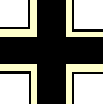Germany


Oberleutnant Paul Rehahn
Germany


Oberleutnant Paul Rehahn
Paul Rehahn was born on 10 December 1912 in Kanitzken, Krs. Marienwerder.
Rehahn took part in the Spanish Civil War as a member of the Legion Condor and he was part of the second cadre of pilots to come to Spain.
By the beginning of October 1936 six of the new batch of He 51s had arrived in Spain, together with ten volunteer pilots and more mechanics - ”a necessary and welcome strengthening”, as Oberleutnant Herwig Knüppel described it. ”Just like we had done two months previously, they had put together their He 51 single-seaters in Seville, for which we soon almost fell around their necks with joy.”
This latest batch of pilots comprised Oberleutnante Dietrich von Bothmer, Oskar Henrici and Günther Radusch, Leutnante Kurt von Gilsa, Rehahn and Henning Strümpell and Unteroffiziere Willi Gödecke, Kowalski, Ernst Mratzek and Erwin Sawallisch. It was now possible to split the Jagdstaffel into two elements – five aircraft under Oberleutnant Hannes Trautloft headed north on 5 October to León to escort supply and bombing missions around the Nationalist enclave at Oviedo in Asturias, while the others, under Oberleutnant Kraft Eberhardt, went to Barahona and eventually on to Zaragoza. Communications between the two Ketten would be maintained by a solitary Fokker F VII that had been assigned to the Staffel.
By the middle of October, more Heinkels had arrived, and the strength of the fighter Staffel increased to 14 He 51s.
On 8 December 1936, Leutnant Rehahn of 4. J/88 (He 51B-1) claimed a Breguet XIX. In fact it seems that it was a Casa-Vickers Vildebeest, which force-landed near Yurre.
Oberleutnant Hannes Trautloft and Leutnant Dietrich von Bothmer both also from 4. J/88 claimed an I-16 each.
On 12 December, the 4.J/88 (He 51B-1) had a great day when they claimed four SBs and one unconfirmed. They were claimed by Leutnant Kurt von Gilsa, Leutnant Rehahn, Unteroffizier Erwin Sawallisch, Unteroffizier Willi Gödecke and Oberleutnant Herwig Knüppel (unconfirmed).
None of these claims can’t be verified by Republican records.
On 11 February 1937, Oberleutnant Rehahn was killed at Caceres on take-off while flying Bf 109 V3 WNr. 760 (6-2) on a ferry flight to the north. His parachute bag, which had been stowed into a compartment behind his seat and stuffed with dirty laundry, pushed him forward onto the control column and the aircraft went into a tailspin, crashing into the ground.
At the time of his death, Rehahn was credited with 2 biplane victories.
In 1939, he was decorated with a posthumous Spanienkreuz in Gold for his service in Spain.
Claims:
| Kill no. | Date | Time | Number | Type | Result | Plane type | Serial no. | Locality | Unit |
| 1936 | |||||||||
| 1 | 08/12/36 | 1 | Vildebeest (a) | Destroyed | Heinkel He 51B-1 | near Yurre | 4.J/88 | ||
| 2 | 12/12/36 | 1 | SB (b) | Destroyed | Heinkel He 51B-1 | Spain | 4.J/88 |
Biplane victories: 2 destroyed.
TOTAL: 2 destroyed.
(a) Claimed as a Breguet XIX but seem in fact have been a Casa-Vickers Vildebeest.
(b) This claim can’t be verified with Republican records.
Sources:
Aces of the Legion Condor – Robert Forsyth, 2011 Osprey Publishing, Oxford, ISBN 978-1-84908-347-8
Aces of the Luftwaffe
Aircrew Remembered
Luftwaffe Officer Career Summaries – Henry L. deZeng IV and Douglas G. Stankey
The Legion Condor - Karl Ries and Hans Ring, 1992 Schiffer Publishing, ISBN 0-88740-339-5


